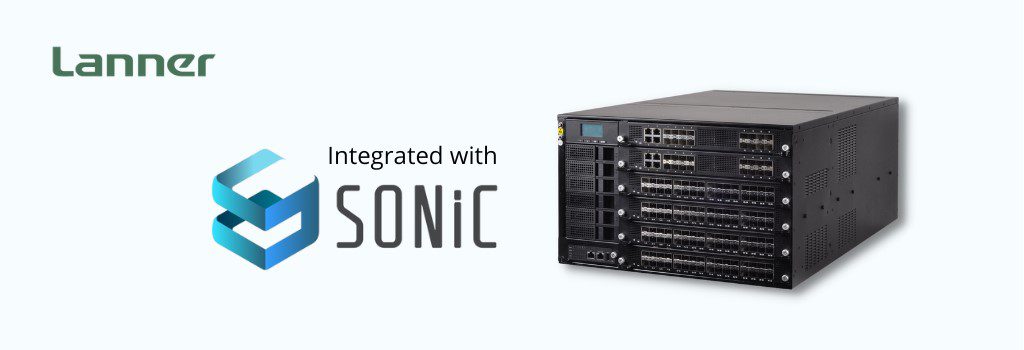SD-WAN is becoming a more mature and fully developed technology. It continues to improve application performance and agility, reduce costs with transport-independence connectivity and simplify IT operations with cloud-based management and automation.
But SD-WAN is taking a general direction and adapting to other vital areas like remote access, SASE, support for IoT, and added SD-Branch functionality. In this post, we’ll go over the seven trends that are making a difference in SD-WAN in 2021 and 2022.
The current market state and what to expect in 2022?
Research from the Dell’Oro Group has revealed an optimistic future for the business network market, specifically for the broadband access equipment and the SD-WAN (Software-Defined Wide Area Network). The researchers have strong confidence that the SD-WAN market will continue to grow in 2021 and 2022. According to Dell’Oro Group’s SD-WAN and enterprise router quarterly report, the global SD-WAN market grew by 39% over 2021’s first half, compared to 2020, and will continue its growth trend in 2022.
Although SD-WAN remained a key technology during the 2020’s COVID-19 lockdowns, its growth plateaued due to the lack of investments in IT. The pandemic made people work from home, so many vertical markets including travel, hospitality, and retail had to close down a number of their branch offices. But 2021 sheds new light. In 2021 many industries saw the need for remote access, security, speed, etc and so they started to re-adjust their investments towards network infrastructure.
In 2020’s fourth quarter and the beginning of 2021, there were some bold acquisitions and partnerships to attempt to cover the SD-WAN market. For instance, HPE acquired Silver Peak, Palo Alto Networks acquired CloudGenix, and Cisco partnered with Equinix.
The Seven Trends for 2021 and 2022.
1. Reduce Backhaul Traffic and Improve Multi-cloud Connectivity.
2. Secure and Reliable Remote Access.
3. SD-Branch is emerging.
4. Using 5G as an SD-WAN transport.
5. Automation, AI, and ML will change the game.
6. Managed services on the raise.
7. SD-WAN as an enabler of the edge computing model.
1. Reduce Backhaul Traffic and Improve Multi-Cloud Connectivity.
Enterprises that depend on geographically distributed branch offices would usually backhaul all traffic coming from branches and destined to the cloud, to the headquarters data center first. This backhaul traffic gets inspected, aggregated, and then forwarded to different cloud providers.
SD-WAN reduces or eliminates this need to backhaul traffic. For instance, an SD-WAN edge platform helps establish a secure, reliable, and high-performance connectivity to applications running on multi-cloud environments without the need to backhaul traffic. Seeing the potential in SD-WAN to improve multi-cloud environments, the leading SD-WAN providers have partnered with popular cloud providers to simplify access and accelerate cloud connectivity.
2. Secure and Reliable Remote Access.
SD-WAN shows promise as a secure remote access solution when integrated with services like Secure Access Service Edge (SASE) or Zero-Trust Network Access (ZTNA). It is believed that by 2021, the majority of SD-WAN providers and vendors will expand their offerings to include SASE, along with ZTNA, SIEM, and more. They will also use this technology to improve the security of LAN, WLAN, and WAN security policies, at branch offices.
SASE backed up by an SDWAN solution will likely replace an organization’s MPLS backbone sooner or later. According to Gartner’s latest SASE forecast report, by 2024, more than 60% of SD-WAN deployments will have already implemented the SASE architecture.
3. SD-Branch is Emerging.
Software-Defined Branch (SD-Branch) is a central and single-managed platform designed to replace a portion or all branch network architecture. It simplifies network operations, management, and deployment by combining WAN connectivity (routing and SD-WAN) with security and LAN/WLAN.
The Doyle Research predicts that the SD-branch market will grow from several hundred million dollars in 2021 to several billion dollars by 2025. Between 2020 and 2021, the popular SD-WAN providers including HPE Aruba and Fortinet, have been already investing and working on adding SD-Branch office capabilities into their platforms.
4. Using 5G as an SD-WAN Transport.
5G mobile broadband technology is helping meet today’s demand for bursty bandwith and ultra-low latency connections, specifically driven by the expansion of IoT and IIoT.
In 2021 and 2022, many organizations will begin using 5G as one of the transport mechanisms for SD-WAN connectivity (as backup or to bond Internet speeds). 5G is the right choice because of its high broadband speeds, reliability, and security. SD-WAN will also help 5G service providers manage the transition to the end-to-end 5G infrastructure and overall deliver a tailored and higher-quality user experience.
5. Automation, AI, and ML will Change The Game.
During the beginning of 2021, SD-WAN vendors began using automation, Artificial Intelligence (AI), and Machine Learning (ML) technologies to improve their SD-WAN products and services delivery. Such technologies can help ensure end-to-end quality of service, service integration, optimize traffic, manage 5G cells, and automatically identify and remediate application bottlenecks.
For instance, ML can be used to make SD-WAN learn to automatically adapt to different network conditions in real-time and optimize routing by prioritizing demanding and high-bandwith traffic to different transport technologies.
6. Managed Services on the Raise.
Although new SD-WAN deployments offer many benefits in terms of speed, control, and flexibility, they require the right skillsets to set up and maintain. An expert should integrate and maintain multiple branch offices, the data center, headquarters, and the different cloud services within a single SD-WAN architecture. Plus, when troubles arise, the expert should quickly troubleshoot SD-WAN.
In a managed SD-WAN service or SD-WAN-as-a-Service, the provider supplies the optimal hardware (open architecture-based uCPE), software, networking, transport services, and expertise needed to deliver the optimal service or application. The service provider also deploys, manages, configures, updates, and maintains the entire SD-WAN network. They might also include Service-Level Agreements (SLAs) to guarantee certain uptime and performance.
7. WAN Edge Infrastructure and the uCPE.
The universal Customer Premises Equipment (uCPE) is a general-purpose whitebox appliance designed for SDN and NFV. It allows different functions, including routing, VPN, firewall, IPS/IDS, and SD-WAN, to run on a single platform. The uCPE performs the SD-Branch or SD-WAN Edge function.
In 2019, SD-WAN was considered one of the best use cases for the universal Customer Premises Equipment (uCPE). And now, according to a report from Gartner, “it is estimated that by 2023, more than 90% of all WAN edge infrastructure refresh initiatives will be based on uCPE platforms or SD-WAN software/appliances.”
Photo by fabio on Unsplash








